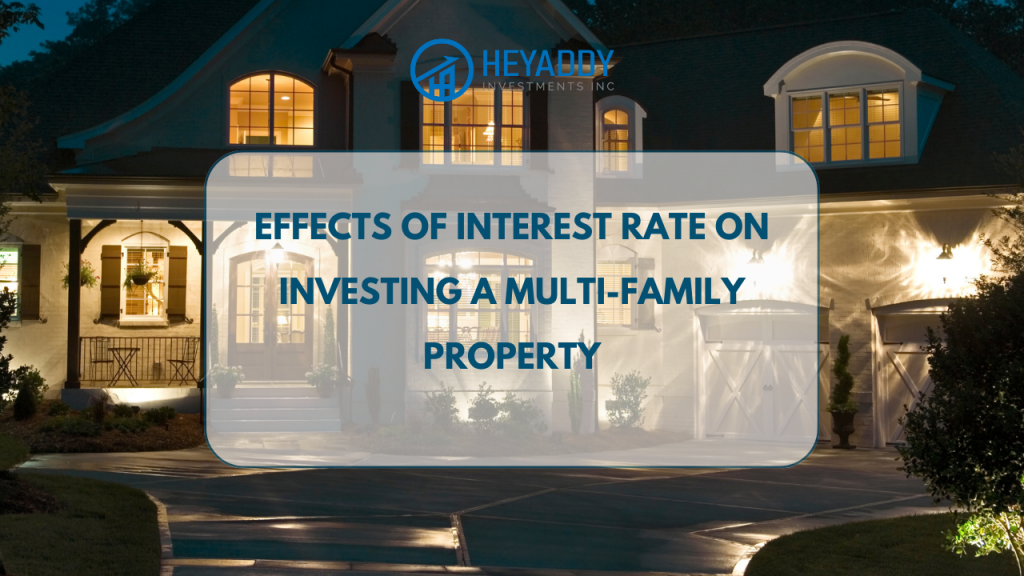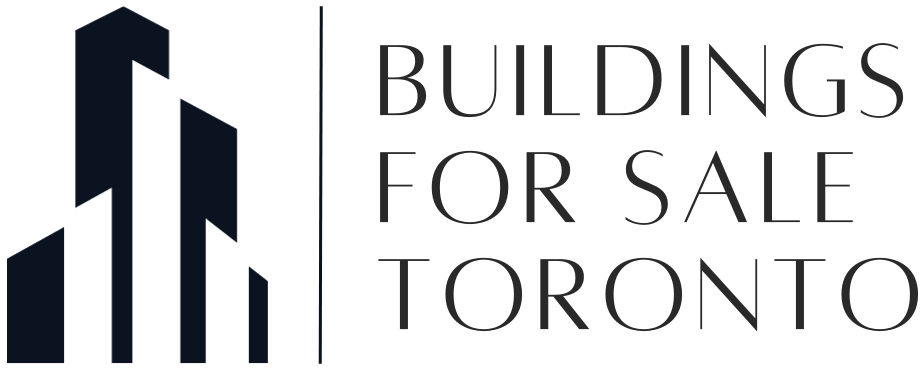Effects of Interest Rate on Investing a Multi-Family Property

In the ever-changing realm of real estate investing, grasping the influence of interest rates is vital, particularly for multi-family properties. With solid demand in the multifamily market amid economic uncertainty, it’s crucial to comprehend the short-term and long-term consequences of interest rate hikes. Let’s first explore the concept of inflation to get a clearer picture of how an interest rate hike affects the multifamily market. Inflation is the gradual increase in the overall price level of goods and services within an economy over time. It erodes the purchasing power of money, leading to increased expenses for investors and developers. The Bank of Canada employs interest rates as a tool to manage inflation. When interest rates go up, the BoC’s goal is to reduce consumer spending and borrowing, thereby slowing economic growth, and curbing inflationary pressures. These rates can influence the overall profitability, financing options, and investment strategies for multifamily properties.
Negative Impact of rising interest rates on the multifamily investment landscape
Costly Debt Dynamics
When interest rates rise, debt becomes pricier, influencing investor returns and property prices. This shift in market dynamics might lead to decreased transaction volume or investors opting to hold onto properties, awaiting a more favorable seller’s market.
Variable-Rate Debt Dilemma
Investors with variable-rate debt may face challenges during resets. A property generating positive cash flow at 3% interest may not be sustainable at 6%. This could lead to negative cash flow, potentially resulting in loan defaults and foreclosures as operational reserves run dry or loan covenants are breached.
Job Market Jitters
Rising interest rates often correlate with job layoffs. According to a recent PwC survey, half of industry executives are reducing headcount or planning to, with 52% implementing hiring freezes. In the multifamily market, anticipating slower growth, investors and property managers might trim staff in response to operational challenges. While a short-term fix, job losses can trigger late payments and collection costs, further impacting property profitability.
However, while high-interest rates are generally perceived as a challenge in the realm of investments, there are scenarios where they can bring about positive impacts in multifamily real estate:
Enhanced Returns for Lenders
Higher interest rates mean that lenders, such as banks or financial institutions, earn more from the interest charged on loans. This can make lending to multifamily property investors more attractive, potentially leading to increased loan availability.
Stability in Market Conditions
High-interest rates can contribute to a more stable real estate market. When interest rates are high, property values may be less prone to rapid and unpredictable fluctuations. This stability can be beneficial for long-term investors looking for predictability in their investment returns.
Reduced Speculative Activity
High-interest rates may discourage speculative investment behavior, where investors buy properties with the sole intent of selling them quickly for a profit. This reduction in speculative activity can contribute to a more sustainable and balanced market, preventing the formation of property bubbles that can lead to market crashes.
Discourages Overleveraging
High-interest rates act as a natural deterrent against excessive borrowing or overleveraging. This can be positive for the overall health of the multifamily investment sector, as it encourages investors to use a more cautious approach in financing their acquisitions, reducing the risk of financial instability.
Attractive Yields for Fixed-Income Investors
High-interest rates make real estate investments more appealing to fixed-income investors seeking stable and attractive yields. Multifamily properties, known for their reliable cash flow, become a more attractive option compared to other investment vehicles in a high-interest-rate environment.
Potential for Bargain Purchases
High-interest-rate environments may lead to a decline in property prices as demand softens. For investors with sufficient capital and a long-term perspective, this presents an opportunity to acquire properties at more favorable prices, with the potential for significant appreciation when interest rates eventually decrease.
In conclusion, high interest rates in multifamily investments can have some silver linings. They might bring stability to the market, making property values less jumpy. Also, they discourage risky behaviors like buying and selling properties quickly, making the market more reliable. High rates could mean fewer people taking big loans, preventing financial troubles down the road. For those looking to invest for the long haul, high rates might mean a chance to buy properties at lower prices. Remember, while high rates pose challenges, they can also create opportunities for savvy investors willing to navigate the market wisely.
If you’re interested in finding out more about investing in Multi-family properties, please make sure to leave a comment or contact us
